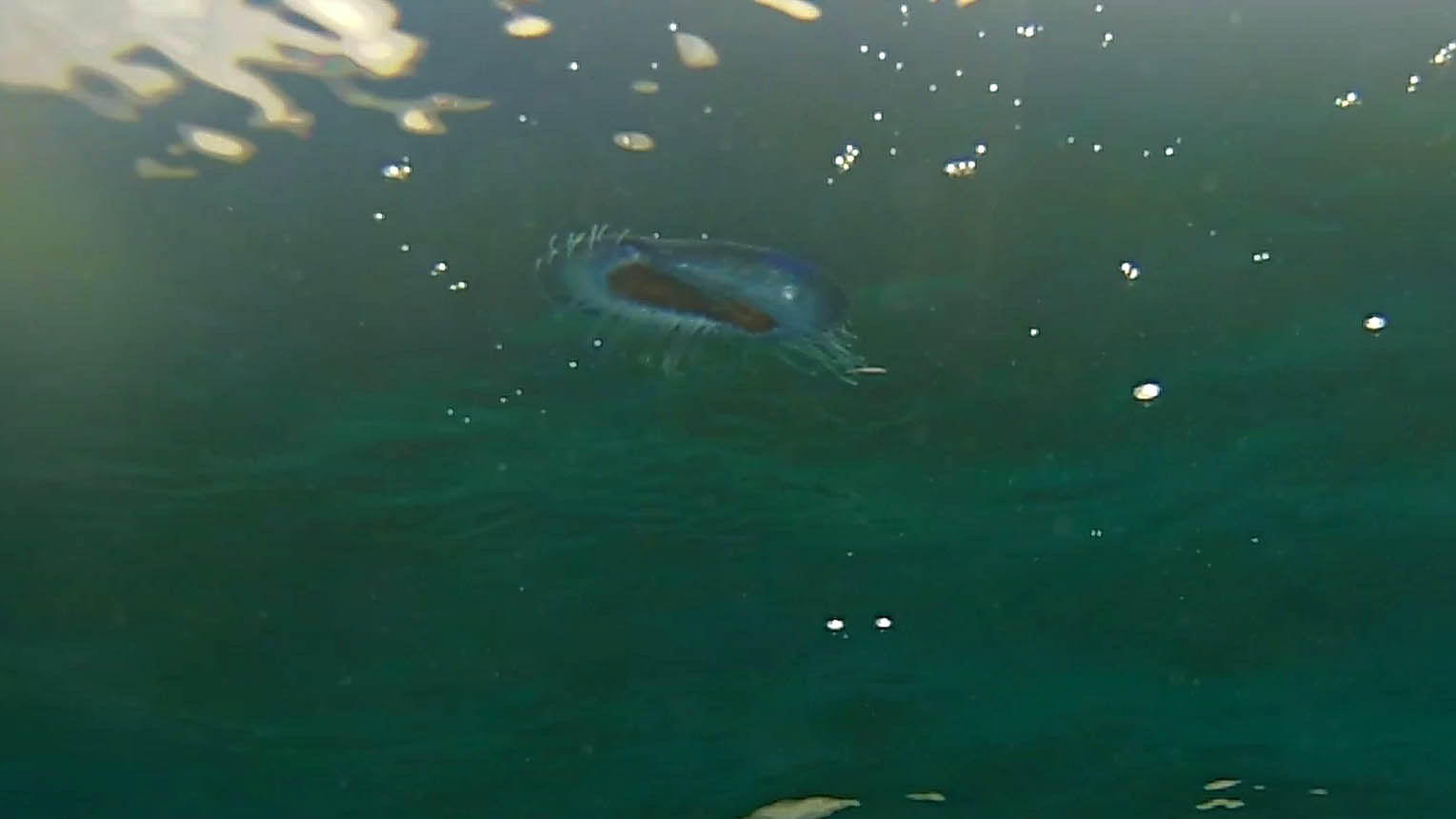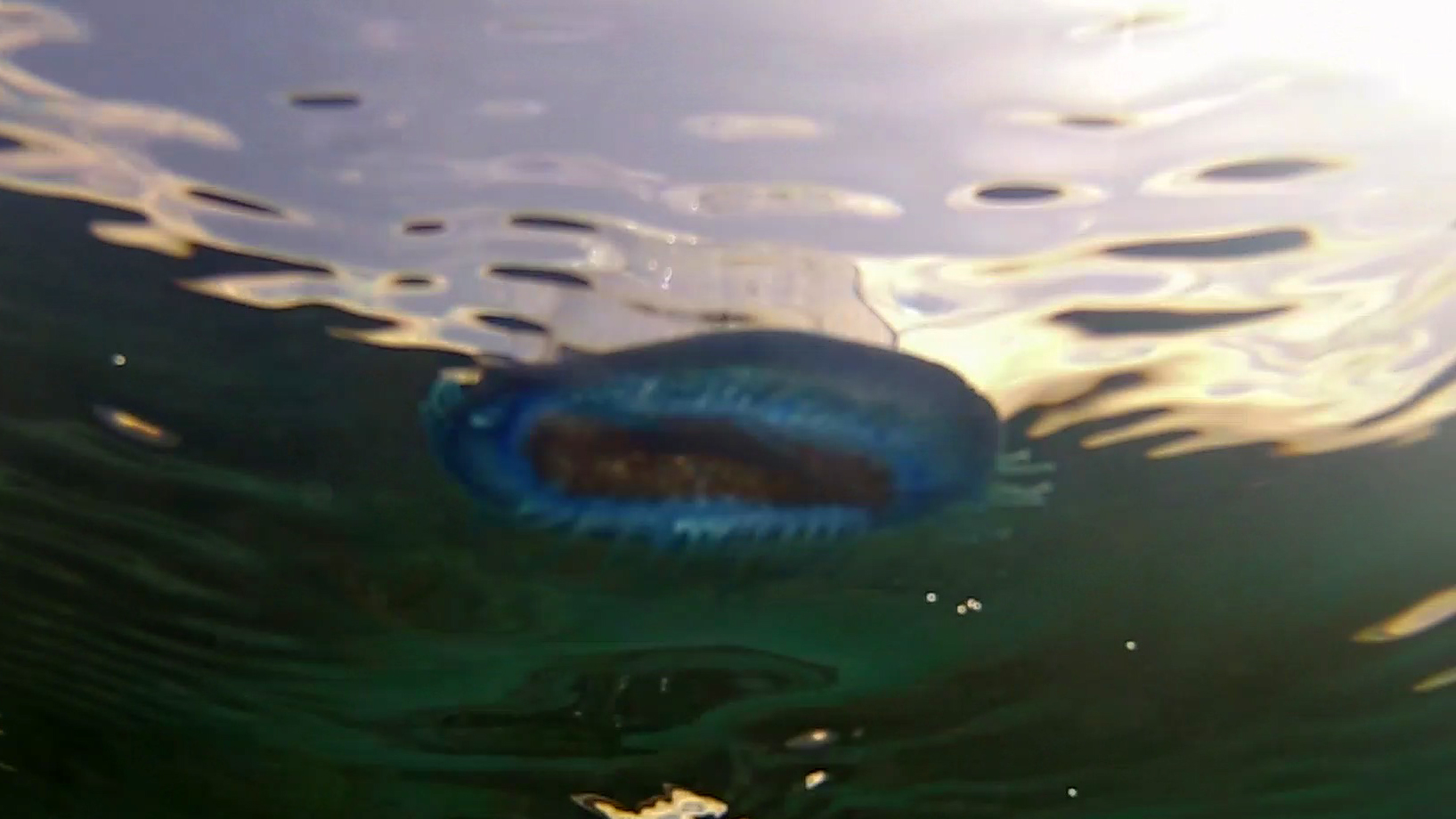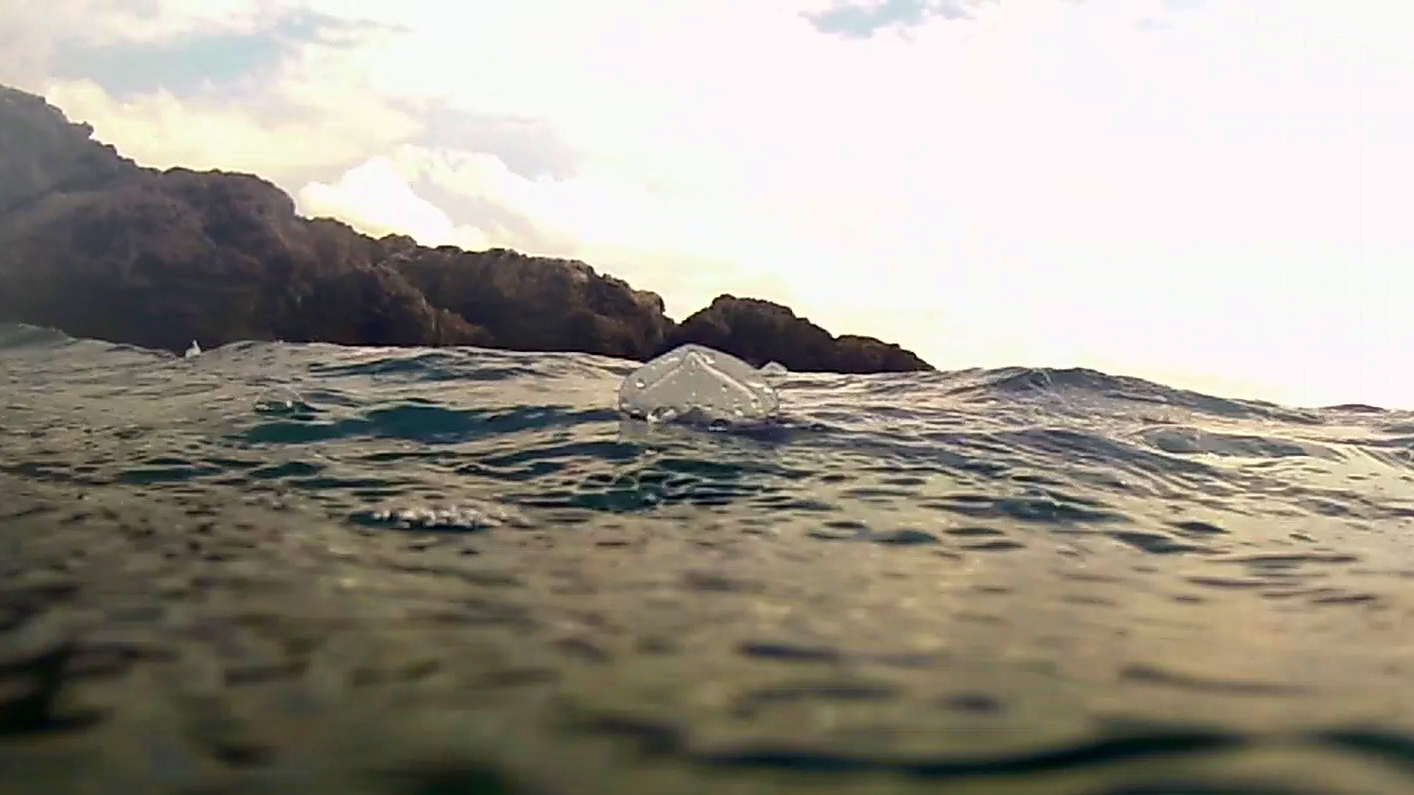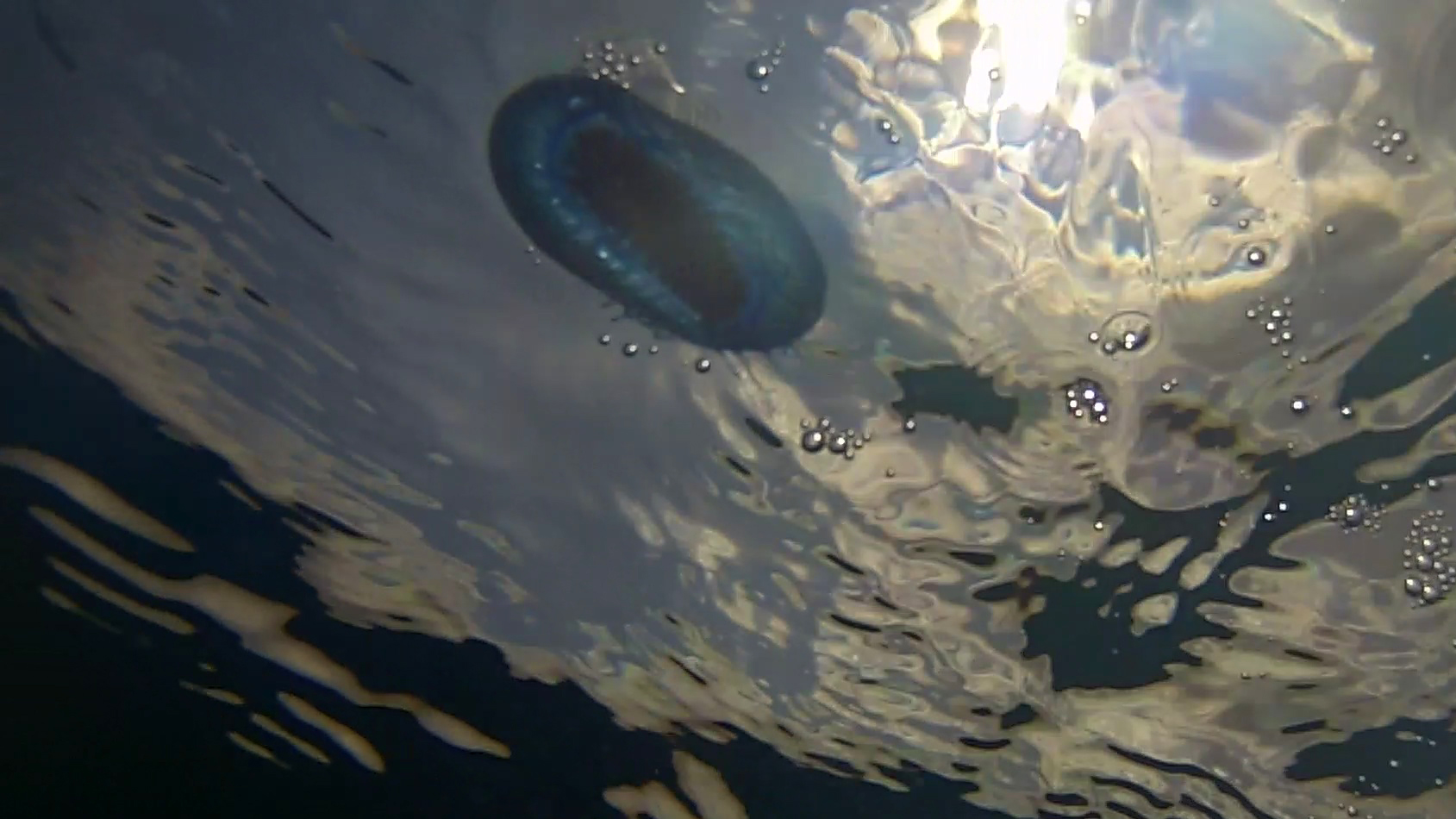Sea Raft - Velella Velella

Velella Velella is a monospecific genus of hydrozoa in the Porpitidae family. Its only known species is Velella velella, a cosmopolitan free-floating hydrozoan that lives on the surface of the open ocean. It is commonly known by the names sea raft, by-the-wind sailor, purple sail, little sail, or simply Velella.
This small cnidarian is part of a specialised ocean surface community that includes the better-known cnidarian siphonophore, the Portuguese man o’ war. Specialized predatory gastropod mollusks prey on these cnidarians. Such predators include nudibranchs (sea slugs) in the genus Glaucus and purple snails in the genus Janthina.

Like other Cnidaria, Velella velella are carnivorous. They catch their prey, generally plankton, by means of tentacles that hang down in the water and bear cnidocysts (also called nematocysts). The toxins in their nematocysts are effective against their prey. While cnidarians all possess nematocysts, in some species the nematocysts and toxins therein are more powerful than other species. V. velella’s nematocysts are relatively benign to humans, although each person may respond differently to contact with the nematocyst toxin. It is wise to avoid touching one’s face or eyes after handling V. velella, and itching may develop on parts of the skin that have been exposed to V. velella nematocysts.

Distribution and habitat
Velella velella lives in warm and temperate waters in all the world’s oceans. They live at the water/air interface, with the float above the water, and polyps hanging down about a centimetre below. Organisms that live partly in and partly out of the water like this are known as pleuston. Offshore boaters sometimes encounter thousands of V. velella on the water surface.
The small rigid sail projects into the air and catches the wind . However Velella sails always align along the direction of the wind where the sail may act as an aerofoil so that the animals tend to sail downwind at a small angle to the wind. Having no means of locomotion other than its sail, V. velella is at the mercy of prevailing winds for moving around the seas, and are thereby also subject to mass-strandings on beaches throughout the world.
For example, most years in the spring, there is a mass stranding that occurs along the West Coast of North America, from British Columbia to California, beginning in the north and moving south over several weeks’ time. In some years, so many animals are left at the tide line by receding waves, that the line of dying (and subsequently rotting) animals may be many centimetres deep, along hundreds of kilometres of beaches. Mass strandings have been reported also on the west coast of Ireland.

Life cycle
Like many Hydrozoa, Velella velella has a bipartite life cycle, with a form of alternation of generations. The deep blue, by-the-wind sailors that are recognized by many beach-goers are the polyp phase of the life cycle. Each “individual” with its sail is really a hydroid colony, with many polyps that feed on ocean plankton.
These are connected by a canal system that enables the colony to share whatever food is ingested by individual polyps. Each by-the-wind sailor is a colony of all-male or all-female polyps. The colony has several different kinds of polyps, some of which are both feeding and reproductive, called gonozooids, and others protective, called dactylozooids.

https://en.wikipedia.org/wiki/Velella
